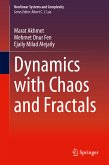Geography of Order and Chaos in Mechanics contains many figures that illuminate its concepts in novel ways, but perhaps its most useful feature is its inclusion of software to reproduce the various numerical experiments. The graphical user interfaces of five supplied MATLAB programs allows readers without any knowledge of computer programming to visualize and experiment with the distribution of order, chaos and resonances in various Hamiltonian systems.
This monograph will be a valuable resource for professional researchers and certain advanced undergraduate students in mathematics and physics, as well as an exceptional reference for PhD students with an interest in perturbation theory.
The Second Edition includes a new chapter on theoretical and numerical results in the study of the solar system's (in)stability obtained since publication of the First Edition, clarifying the topological mechanism that causes the sudden increase in Mercury's eccentricity. An updated version of the companion software is also provided, which contains new features and better Graphical User Interfaces. Thanks to the compiled versions, all the software can be used even if the user does not have access to a MATLAB installation.
Dieser Download kann aus rechtlichen Gründen nur mit Rechnungsadresse in A, B, BG, CY, CZ, D, DK, EW, E, FIN, F, GR, HR, H, IRL, I, LT, L, LR, M, NL, PL, P, R, S, SLO, SK ausgeliefert werden.









